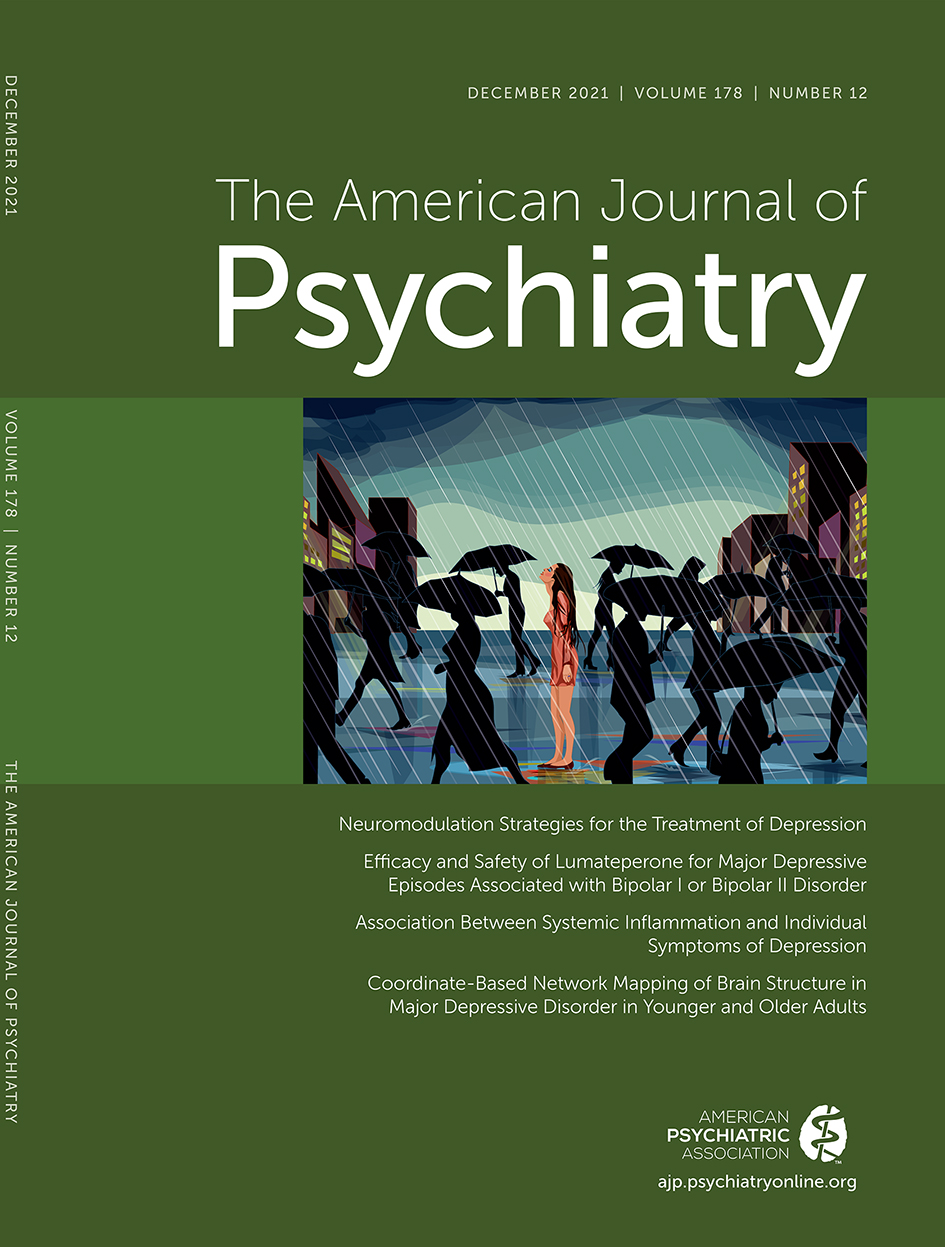Coordinate-Based Network Mapping of Brain Structure in Major Depressive Disorder in Younger and Older Adults: A Systematic Review and Meta-Analysis
Abstract
Objective:
Structural neuroimaging findings in younger and older adults with major depressive disorder (MDD) are highly heterogeneous, possibly as a result of methodological limitations, lack of distinction between MDD and late-life depression (LLD), or clinical moderators. Using a novel meta-analytic network mapping approach, the authors sought to identify the circuits affected in different clinical subtypes of MDD.
Methods:
The authors identified all voxel-based and surface-based morphometry studies published through October 2020 that compared younger adults with MDD or older adults with LLD to nonpsychiatric control participants. An activation likelihood estimation (ALE) analysis and a novel coordinate-based network mapping approach were used to identify brain circuits affected in MDD and LLD. Meta-regressions examined the impact of age at onset in older patients with LLD and treatment with antidepressants in younger patients with MDD.
Results:
The authors analyzed 145 comparisons from 143 articles, including a total of 14,318 participants (MDD: N=6,362; LLD: N=535; control subjects: N=7,421). Significant ALE results confirmed previous findings implicating the left and right parahippocampus and anterior cingulate in MDD and the anterior cingulate in LLD. In contrast, coordinate-based network mapping showed differences in the frontoparietal, dorsal attention, and visual networks both in MDD and LLD. Meta-regressions showed that late onset was significantly associated with widespread structural abnormalities in LLD, and treatment with antidepressants showed a significant association with abnormalities in the anterior cingulate (Brodmann’s area 32) and dorsolateral prefrontal cortex (Brodmann’s area 9) in MDD.
Conclusions:
These findings help to clarify the shared circuitry of depression across the adult lifespan and highlight some unique circuitry relevant to late-onset depression, which may explain some of the risk for cognitive decline and dementia.



